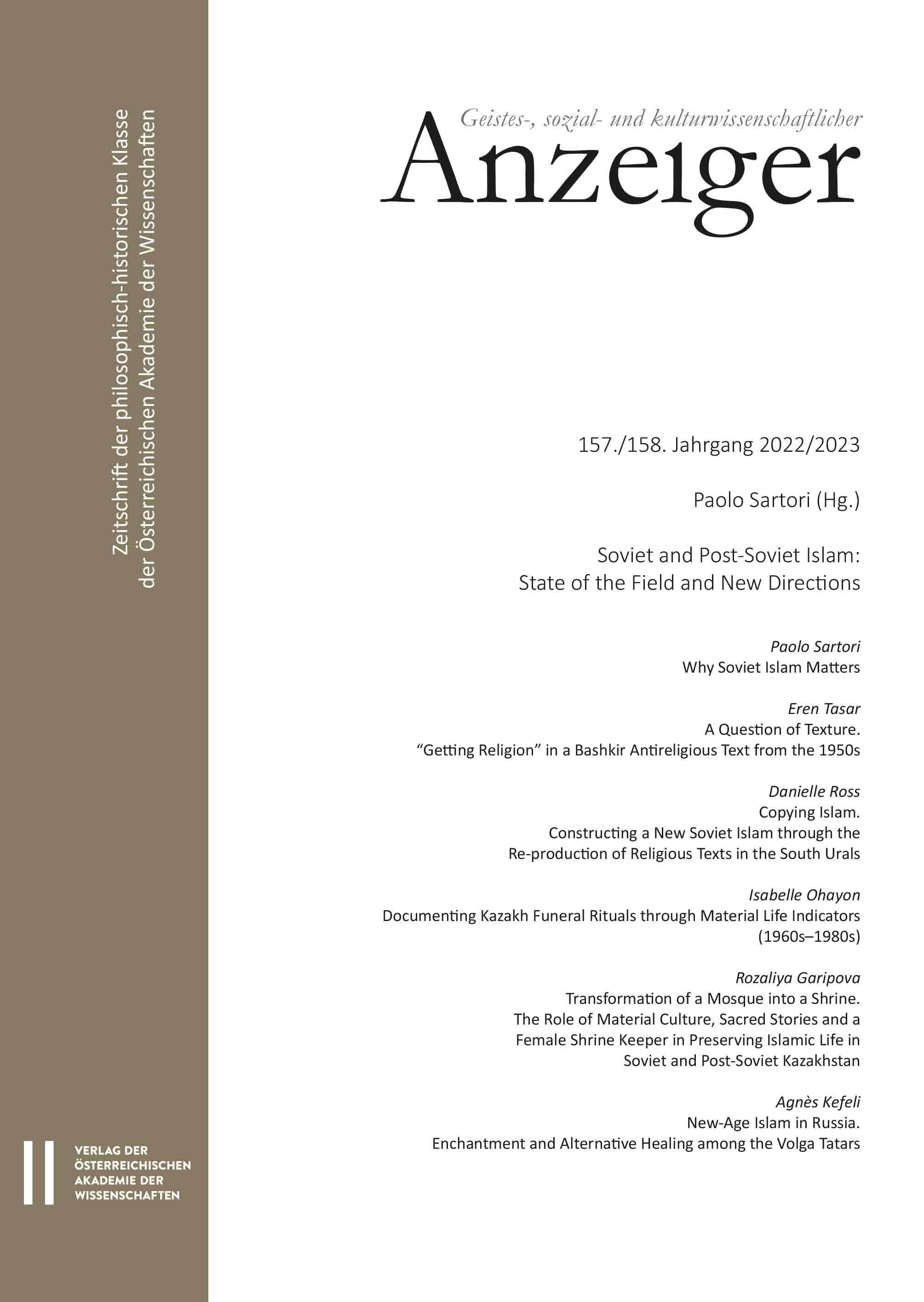
Geistes-, sozial- und kulturwissenschaftlicher Anzeiger, 157. Jahrgang 2022, Heft 1+2, pp. 83-106, 2023/09/21
157. Jahrgang 2022/2023, Heft 1+2

Discourses on religious life during the late Soviet period have enduringly been hyper-normative in Central Asian societies and continue to obliterate the wide spectrum of Muslim practices performed daily from the 1960s to the 1980s. To circumvent this rhetoric, the present article proposes to focus on material life indicators as an innovative method for documenting the intensity of ritual life. It particularly investigates the case of Kazakh funeral rituals. During the Soviet period, honoring the dead according to the ritual prescribed by Islam remained a continual social and moral imperative within Kazakh society. However, the forms of control, institutionalization and repression implemented under Soviet religious policy altered the ways in which funeral practices were conducted. In addition, the material dimension of the ritual performances (remuneration of officiants, organization of meals, etc.), which was an essential concern as well as a means of regulation for the authorities, represented a persistent challenge for Kazakh society. The management of cemeteries and the organization of funerals were imbricated with existing constraints of Soviet economic life, including its shortages and circumvention practices. They required the mobilization of significant resources by the communities. The capacity of families to conform to customs and their investment in increasingly ostentatious rites of prodigality was linked to their respectability. But such rites also hearkened back to the authority of the deceased, derived in particular from their social position within statutory Soviet hierarchies. Given these challenges, the symbolic, social and material space of death thus constituted a place where practices could be deployed autonomously and where Kazakh Muslims could be socialized to religion in the era of late socialism.
Keywords: Ritual economy, Soviet Islam, informal economy, funeral practices, religious socialization